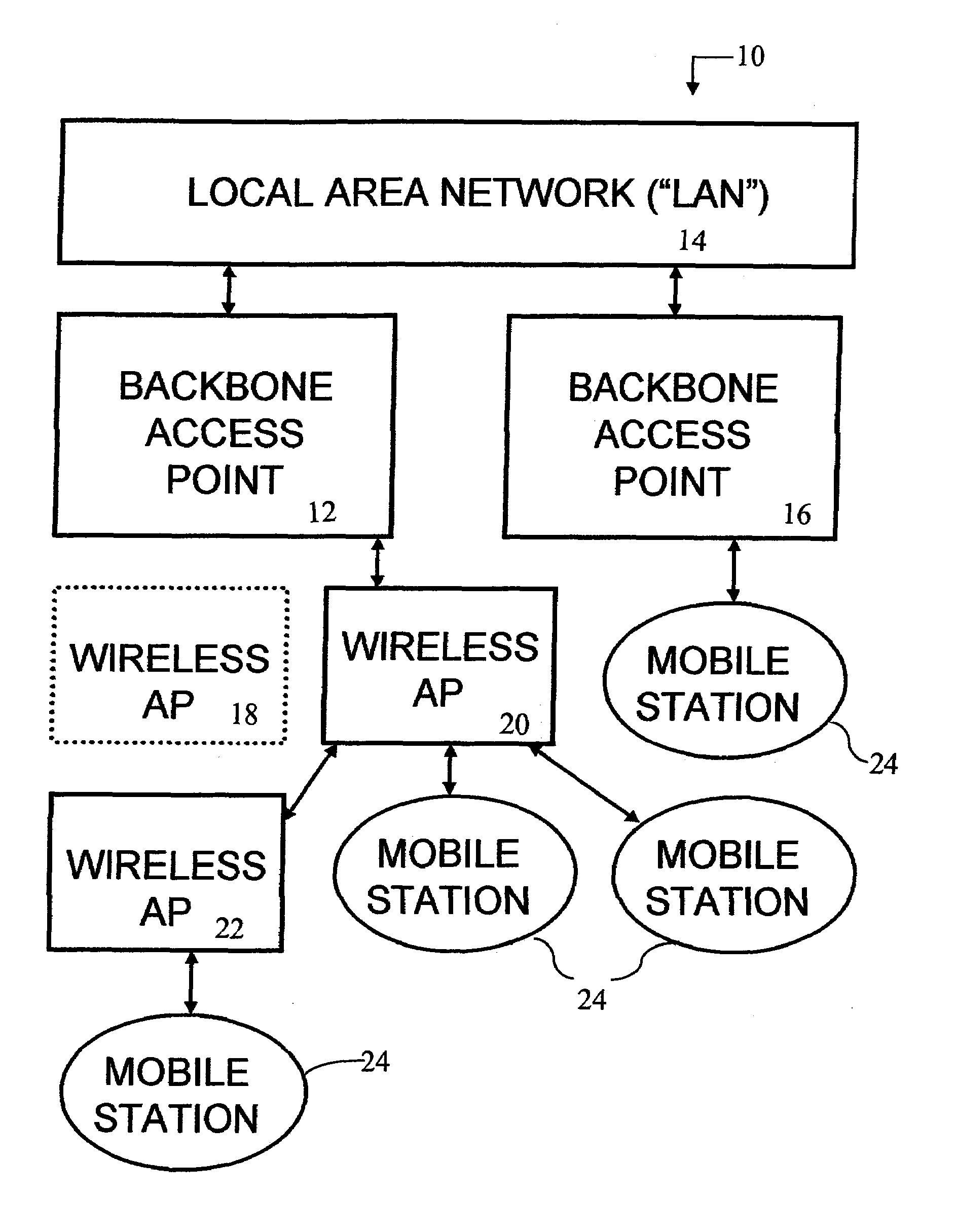Dynamic wireless network
- Summary
- Abstract
- Description
- Claims
- Application Information
AI Technical Summary
Benefits of technology
Problems solved by technology
Method used
Image
Examples
Embodiment Construction
[0048]As a general overview of the invention, the block diagram of FIG. 1 shows a Dynamic Wireless Network 10. A first Backbone Access Point (“Backbone AP”) 12 is electrically connected to a Local Area Network (“LAN”) 14. Optionally, additional Backbone APs 16 may also be connected to the LAN 14. A First Level Wireless Access Point 18 is connected to the first Backbone AP 12 by the transmission and reception of radio frequency (“RF”) signals. Other First Level Wireless Access Points 20 may be connected to Backbone APs 12,16. One or more Second Level Wireless Access Points 22 may also be connected to the First Level Wireless Access Points 18,20 using RF signals. In this manner, subsequent levels of Wireless Access Points may be utilized to increase the range and coverage area of the Dynamic Wireless Network 10. The term Access Point (“AP”) is used to reference both Backbone APs 12,16 and Wireless APs 18,20,22.
[0049]Mobile Stations 24 are portable devices such as laptop personal compu...
PUM
 Login to View More
Login to View More Abstract
Description
Claims
Application Information
 Login to View More
Login to View More - R&D
- Intellectual Property
- Life Sciences
- Materials
- Tech Scout
- Unparalleled Data Quality
- Higher Quality Content
- 60% Fewer Hallucinations
Browse by: Latest US Patents, China's latest patents, Technical Efficacy Thesaurus, Application Domain, Technology Topic, Popular Technical Reports.
© 2025 PatSnap. All rights reserved.Legal|Privacy policy|Modern Slavery Act Transparency Statement|Sitemap|About US| Contact US: help@patsnap.com



